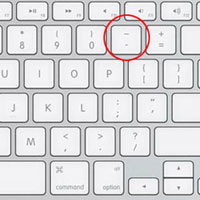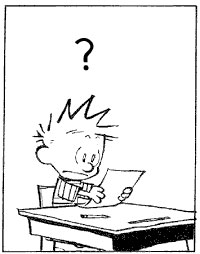Regardless of how good a writer I am compared to other people – I am certainly a better writer than when I first started.
Here are five writing tips I learned along the way:
1. Use less commas, rather than more
As a general rule, cut commas out of sentences and just let them flow. Usually a reader can infer the rhythm of a sentence on their own, without the need for a bunch of commas. A good rule of thumb is to use a maximum of two commas per sentence.
Another reason for using less commas is, because, if you use too many commas in a sentence, then, after a while, all the pausing can get tiresome. See what I mean? It’s better to just let sentences run all the way through to the end.
2. Use more periods, rather than less
When in doubt, split a sentence in two by inserting a period in the middle. Periods makes for short sentences which are clean, concise, and easy to read and understand. They’re easy to digest. Every so often you can even drop in a really short sentence, for impact or to make a specific point. Like this.
3. Use “-” liberally
I think most people underuse the dash because we were never taught to write with it in school. We learn the comma, the period, the colon and the semicolon – but never the dash.
I like the dash because it feels smoother and less forced than a comma, and the reader is free to interpret the length of the pause. It also seems to create a more personal tone, mimicking the rhythm of speech better than a colon or semicolon.

You can use a dash to break up a sentence instead of a comma or colon – like this. You can also use two dashes in a sentence – to break it up or to elaborate on a point – before going back to finish the rest of the sentence after.
What about “—“?
To be honest I don’t know the difference between “-” and “—“, and I’ve never bothered to look it up. The small one is called an “en dash” while the big one is called an “em dash” and I believe they can be used interchangeably.
So which one should you use? Unless you’re writing an English grammar textbook, I don’t think it matters. In my mind they each have a slightly different sound or feel, but both are good. Just go with whichever one feels right.
4. Ruthlessly cut out unnecessary words
Many people’s biggest writing mistake is that they simply use too many words. This might be because:
- They’re trying to sound smart
- They really want the reader to understand the message
- They use several so-so words instead of ONE great one
Trying to sound smart is generally not a good idea, because it usually means sacrificing clarity for complexity. On top of that, it’s very transparent. The smart thing is to try and make your writing as clear as possible.
And while it’s easy to think that adding more words will help the reader understand better, usually the opposite is true. More words just makes it more complicated.

Ideally, no one should have read over something more than once, and they certainly shouldn’t have to decipher it like a code. The best writing flows easily into a reader’s understanding, without them having to think about it at all.
It’s much better to use ONE ideal word rather than a few so-so words. Consistently finding ONE word that gets right to the heart of the idea – rather than a few that dance around it – will vastly improve your writing. Which leads us to…
5. Use a thesaurus (or Google)
Although it might seem like ‘cheating’, writers throughout history have used a thesaurus to improve and ‘optimize’ their word choice. Again, one perfect word is better than a few so-so words. Lucky for us, we have Google and don’t need to go flipping through a huge book every time we want to find a better word.
So if you’re reading over your writing and you see a word that doesn’t sound quite right, just type “[word] synonym” into Google and look over the alternatives. Usually you’ll find a replacement that works better.
Or if you have a word on ‘the tip of your tongue’ but can’t quite think what it is – type a synonym of that word into Google and it’ll come right up. This only takes about five seconds but can make a big difference in the long run.
Bonus writing tip #6: “Pull back and reveal” for big impact sentences
This technique is most useful in fiction, but is good in any medium where you’re telling a story. It works for both:
- Grabbing the reader’s attention and curiosity
- Humour
English is structured in such a way that you can have a correct and coherent sentence that is correct and coherent, but where the most important part isn’t revealed until the very end.
This way, the reader is kept in the dark about what’s really going on – right up until the last word or last few words. The first 80-90% of the sentence seems normal enough, until you ‘pull back and reveal’ the impact at the end.

Imagine a story that starts like this:
I always thought I would’ve been asleep when the bombs started falling.
That sounds cool right? It makes you want to read more.
When you read that sentence you wonder – Who is this person? Where are they? Why are they getting bombed and who’s bombing who?
The sentence is written so that a bunch of questions come up in the readers’ mind. This is an effective way to begin a story or really any piece of writing.
Here’s another great example:
“I don’t like this,” I said after almost dying.
That’s the first sentence of this post. It’s an ordinary sentence right up until the very last word – then you’re suddenly thinking “Holy shit you almost died!?” You’re hooked and you want to read more.
This technique is also good for humour, as in the following sentence:
Until a man is twenty-five, he still thinks, every so often, that under the right circumstances he could be the baddest motherfucker in the world.
This is an example taken from Neal Stephenson’s book Snow Crash (Amazon).
You can even purposely draw out the first part of the sentence, as Stephenson has done, to build up more before the ‘reveal’. The more information you include at the beginning, the more curious the reader is, and the more impactful the end.
Here’s another example from the same book:
A man is talking on the phone in Cantonese, which means that he is, in fact, shouting.
Again, ‘pull back and reveal’ – the sentence is ordinary until the very last word, and then it’s funny.
One more example that combines both humour and an attempt to hook the reader’s interest is the first sentence of this post (<– Click there to read it and see what I mean.)
Final Thoughts
These are my best practical writing tips so far – at some point in the future I’ll have improved and will be back with more.
Two more basic tips for better writing – that almost go without saying – are to read a lot and write a lot. If you really want to get better at writing, it’s almost impossible to read or write too much.
So whether you’re writing fiction, a book, your own blog, a university paper, or something else entirely – I hope this has been helpful. Good luck!
Was this helpful? Do you have any writing tips of your own? Post a comment below to let us know what you think.